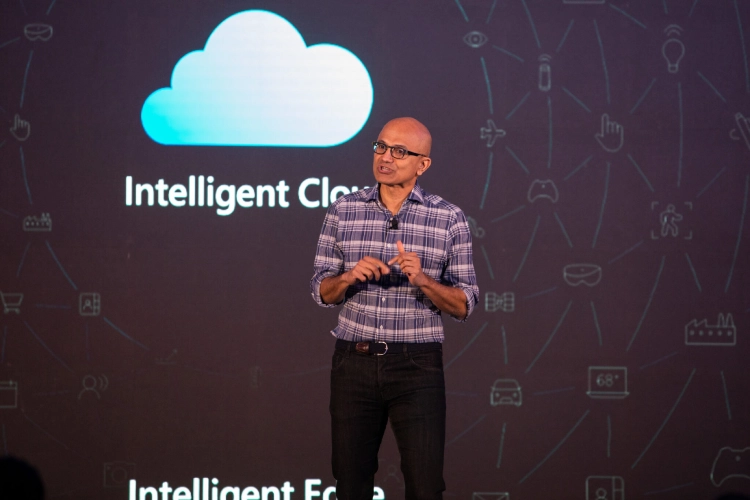

- A recent report from Ecosystem Marketplace shows that the offset market has almost reached $1bn for the first time, but buyers’ habits are changing.
- Analysis shows that at least 36% of S&P 500 companies buy carbon offsets, despite uncertainty of their place within net-zero strategies.
- Microsoft is now rejecting traditional offsets for those focused just on CO2 removal. But what does this mean for the market as a whole?
Most people know broadly what carbon offsets are. As the name implies, carbon offsets involve shifting one’s own emissions elsewhere, by purchasing carbon credits, each of which represents a tonne of carbon that has been either directly removed from the atmosphere or avoided through a project that facilitates emissions reductions.
Sectors such as energy or finance face a harder journey in the race to net zero than others. In the case of energy, that is due to the sector’s particular reliance on carbon-intensive industries. With financial firms, it is because they are responsible for portfolio emissions, over which they may have less influence than their own.
This is why the largest active buyers in the offsets market over the past 18 months were in the energy, consumer goods, finance and insurance sectors, according to a report called ‘Markets in Motion’ released two weeks ago by Ecosystem Marketplace, which tracks the developments of the voluntary offsets market.
Its annual report finds that the voluntary offsets market has shot up in the past year, reaching an all-time high of $1bn in 2021 alone. This is unsurprising given the flurry of net-zero pledges from companies, despite the fact that both critics and regulatory bodies insist that offsetting emissions is not a replacement for direct emissions reductions within a company’s own operations or supply chains.
The Science-Based Targets initiative (SBTi) is firm on this point. In its latest set of recommendations for companies committed to reaching net zero, it states: "The use of offsets must not be counted as emissions reduction toward the progress of companies’ science-based targets" and "offsets are only considered to be an option for companies wanting to finance additional emission reductions beyond their science-based targets".
Unlike the much larger carbon compliance market, the voluntary offset market is largely unregulated. Buyers are free to select whichever carbon credits they choose. But there are private groups, such as Gold Standard, that attempt to verify and categorise offset projects in the voluntary offset market.
Who’s buying carbon offsets?
To get a sense of the extent to which offsets are popular among the world’s largest companies, Capital Monitor analysed the most recent Carbon Disclosure Project (CDP) filings of the top 50 companies on the S&P 500 by index weight. It found that 18, or 36%, reported purchasing carbon credits in 2019; and the number has likely increased since then.
Capital Monitor also analysed the individual projects these companies bought credits from, and found a strong interest in forestry projects, household and community projects and renewable energy projects, mainly located in the global south.
In its larger, but anonymised analysis of over 170 respondents – including companies, project developers and investors – Ecosystem Marketplace found a similar pattern, where forest projects and renewable energy projects are the most popular vehicles for offsetting emissions.
Distinctions between these different project types lie at the centre of the more nuanced debates around carbon offsetting, where projects can be categorised as either ‘removal’ or ‘reduction’.
The most common and cheaper form of removal is forestry, via projects engaged in reforestation or afforestation (where trees are planted in an area where they weren’t before), and are labelled as 'removal' because new trees directly remove CO2 from the atmosphere. This also includes offsets for processes such as carbon capture and storage, whereby new technologies are deployed to suck carbon out of the air and store it in the ground. But these are costly and harder to scale up.
Projects that come under the category of ‘reduction’ are those that indirectly remove CO2 from the atmosphere. For example, projects that fall into the ‘households and communities’ category, such as the Clean Cookstoves project, which teaches women in countries such as Nepal to build clay cookstoves using safe and energy-efficient methods. According to its CDP filings, Disney bought 80,000 carbon credits from Clean Cookstoves in 2018.
Renewable energy also falls into this second category, because while renewable energy infrastructure projects develop alternatives to polluting power types, they are not engaged in directly removing CO2 from the atmosphere.
While these kinds processes have co-benefits, such as supporting communities while reducing potential CO2 in the atmosphere, it is harder to quantify avoided emissions than it is CO2 removal.
Microsoft and the case for removal
From 2020 to 2021, the volume of renewable energy projects marginally decreased, as the above chart shows. This led the report’s authors to suggest that demand for renewable offsets may be peaking.
While the volume of renewable energy credits fell slightly, their prices slumped, from $1.42 per tonne in 2019 to $0.87 in 2020, before creeping back up to $1.1 in 2021. The authors of 'Markets in Motion' attribute these low prices to a "surge" in cheaper credits from Asia, reflecting the difficulty in making an "additional case" for renewable energy credits.
Meaning that if there is enough demand for renewable energy without the need for carbon credits, the offset becomes essentially meaningless. If this is the case, corporations wanting to offset their emissions will need to look to other areas, or projects, to purchase their credits from – supposing there is enough supply.
Supply is, however, contingent to some degree on the pace of climate change itself – only a month ago fires blazed through the forests that contained projects from which technology giant Microsoft and oil major BP had bought offsets.
Microsoft co-wrote an article in the scientific journal Nature in September, in which it argued that offsetting emissions by "paying someone else not to emit as a way to compensate for ongoing emissions" is not as effective as the other kind of offsetting – emissions removal. That is because, says the company, carbon offseting can slow the rate at which CO2 builds up in the atmosphere, but it does not remove any. "That’s why, in 2020, Microsoft pivoted to purchasing only carbon removal."
This statement comes six months after Microsoft’s striking announcement that it would buy 1.3 million tonnes of offset credits specifically linked to removal, which is, by market standards, a lot. Some 1.1 million tonnes of these are linked to forestry projects. Another 193,000t are linked to soil carbon sequestration projects, while just 1,000t goes towards direct air capture technologies.
Microsoft’s acknowledgement of its ‘pivot’ is even more striking since it was one of the world’s largest buyers of the offsets it now describes as less effective, including renewable energy and community-based projects.
Will carbon offsets help with net zero plans?
The huge offset purchase is a key part of Microsoft's plan to be carbon negative by 2030, and its plan to remove the equivalent of all of its historical emissions from 1975 by 2050, as outlined in a blog post.
Carbon negative describes a situation where more carbon is removed from the atmosphere than is put into it. For Microsoft, this involves investing in companies such as Climeworks, which uses machines to suck CO2 from the atmosphere and uses water processes to store it in the ground in rock form.
Microsoft’s ambitious plans were met with both criticism and praise – with some pointing to its partnerships with large polluters such as ExxonMobil. As Nives Dolšak, professor of sustainability science at the University of Washington, told Bloomberg last year: “Their strategy is, ‘We are banking on uncertain technology that will reduce carbon from the air, and if that works out, that allows us to put certain future additional carbon into the air’. ”
Critics of offsets may not be convinced of a significant difference between those that reduce carbon versus those that remove it. But institutions like the SBTi and the Oxford Principles for Net Zero Aligned Offsetting, which helps financial institutions plan for achieving net zero, have expressed a preference for carbon removal rather than reduction projects, according to Ecosystem Marketplace. The latter organisation highlights in its report how carbon removal credits were five times more expensive than reduction credits this year.
Offset confusion
With time running out to reach net zero, big moves from the likes of Microsoft away from one type of offset to another bring more confusion to an already confusing market, that is at once booming while being a hotbed of contestation.
Promoting private sector investment in offsetting and negative emissions is a “recipe for delay and distraction”.
The latest controversy involves the Net-Zero Asset Owner Alliance’s recent call to asset owners, to "immediately scale investment into impactful carbon management and negative emissions technologies", both inside and outside their value chains. Environmental not-for-profit Reclaim Finance released a response last week saying that promoting private sector investment in offsetting and negative emissions is a "recipe for delay and distraction".
With the recent announcement from Mark Carney’s Taskforce on Scaling Voluntary Carbon Markets, that a new, independent governance body will oversee the development of its carbon offset credit principles, some clarity may soon emerge. Although, with it already seeking more regulation, it might be a while before anybody reaches a consensus.






